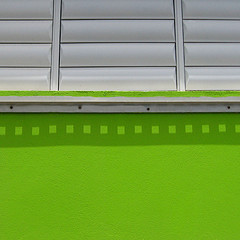I had a friend in college who dreaded going home on the weekends. The problem was that he never knew what he’d find in terms of the living decor and arrangements. It seems his mother had a penchant for creative interior decorating. That’s putting it mildly. It was more like a mania with her. On any given weekend the furniture would be rearranged, walls re-painted, whole rooms redecorated, and on occasion, rooms switched around (a dining room became a den and the den became a guest room). On one exasperating visit my friend arrived home to find that his room had been moved from the upstairs to the basement! As a result of that chaos my friend developed a penchant for routine, almost to the point of excess.

Some people seem to think that routine in the classroom or any teaching environment is a sure sign of an unimaginative teacher who is stuck in a rut. But the truth is that rather than being an indicator of a lack of imagination, routine in the teaching-learning process may actually be a sign of an effective teacher. Routine is often part of the efficient use of time.
Research has found that teachers who are efficient in the use of class time help their learners spend more time engaged in learning, which in turn helps them achieve higher understanding. Effective teachers use routine to help them be efficient. In addition, routine helps with class behavior. One study showed that the less time spent on setting up equipment, handing out papers, taking attendance, etc., the better was student behavior. Keeping your learners engaged in productive learning activities rather than losing time to moving around, getting organized or cleaning up will increase your instructional time, raise the quality of the learning experience, and will have a positive affect on you learner’s behavior. As soon as you can, train your class to follow routines like:
- Entering and leaving the classroom
- Gathering and putting away materials
- Handing out materials
- Arranging chairs for groups
- Handling assignments.
Contrary to misconceptions, routines and habits do not create boredom. In fact, good class routines actually help the learning process by providing a sense of order and familiarity. We don’t learn well when we feel anxious or threatened. And contrary to what a messy teenager will tell you, clutter is not conducive to clear thinking. Routines help learners be alert for learning moments and cues. They can create “learning pathways” for your students for the reception and processing of new information.
Routine can be helpful for any age group. In a former adult Sunday school class we got very efficient about handing routines like taking attendance, distributing bibles and materials, adding chairs for latecomers, etc. Those routines allowed us to start on time and not skip a beat when we were in the middle of the lesson.
Sound routines actually enhance creativity and novelty. A familiar routine will enhance your occasional novel teaching approaches and methods. Instead of being on guard against what may or may not happen next, learners will respond more readily to changes from the routine for learning. Routines can establish the didactic boundaries within which creativity can flourish. While the brain craves novelty, chaos and disorder stress it.
Think about what routines you can establish for your class that can help facilitate the teaching-learning experience for you and your students. When you establish good classroom routines, there is no need to re-invent the wheel every week. Work to create sound routines that will (1) reflect sound didactic principles, (2) allow for creativity and novelty on occasion, (3) will buy you teaching time by helping with classroom housekeeping matters.

“Everywhere is within walking distance if you have the time.” Steven Wright
